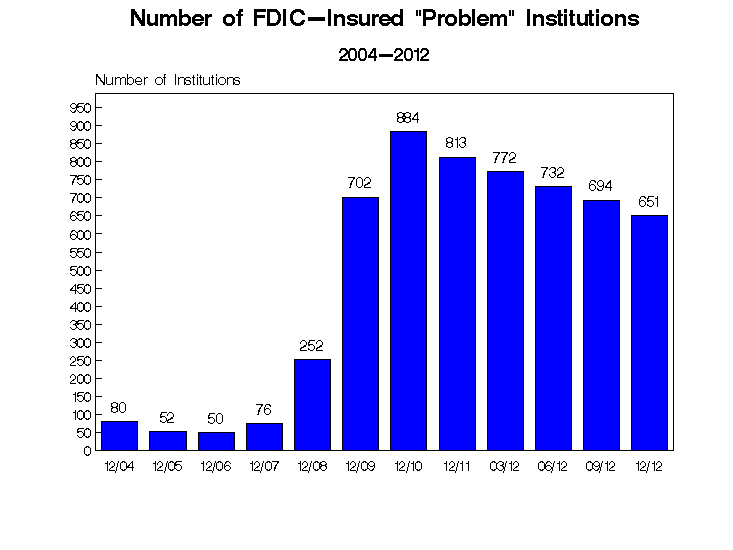The number of banks on the FDIC Problem Bank List declined for the seventh consecutive quarter. According to the latest FDIC Quarterly Banking Profile, the number of problem banks as of December 31, 2012, declined to 651 from 694 in the previous quarter.
Despite significant recovery in the banking industry, the number of problem banks remains historically high. Prior to the financial crisis, the number of problem banks was relatively insignificant compared to the total number of FDIC insured banks. Today, more than five years after the financial crisis began, almost one out of every ten FDIC insured institutions remain on the problem bank list. The FDIC currently insures deposits at 7,083 banks and savings institutions.
 Total assets of FDIC problem banks remains significant at almost a quarter of a trillion dollars. For the quarter ending December 31, 2012, total assets of problem banks declined by $29.5 billion to $232.7 billion, a decrease of 11.3%.
Total assets of FDIC problem banks remains significant at almost a quarter of a trillion dollars. For the quarter ending December 31, 2012, total assets of problem banks declined by $29.5 billion to $232.7 billion, a decrease of 11.3%.
 During the fourth quarter of 2012, the number of FDIC insured institutions declined by 99 banks due to 8 banking failures and mergers and acquisitions.
During the fourth quarter of 2012, the number of FDIC insured institutions declined by 99 banks due to 8 banking failures and mergers and acquisitions.

The number of banks in the United States has been in a steep decline for over a decade. In 1996 there were a total of 11,454 FDIC insured institutions compared to only 7,083 at the end of 2012, a decline of over 38%.



